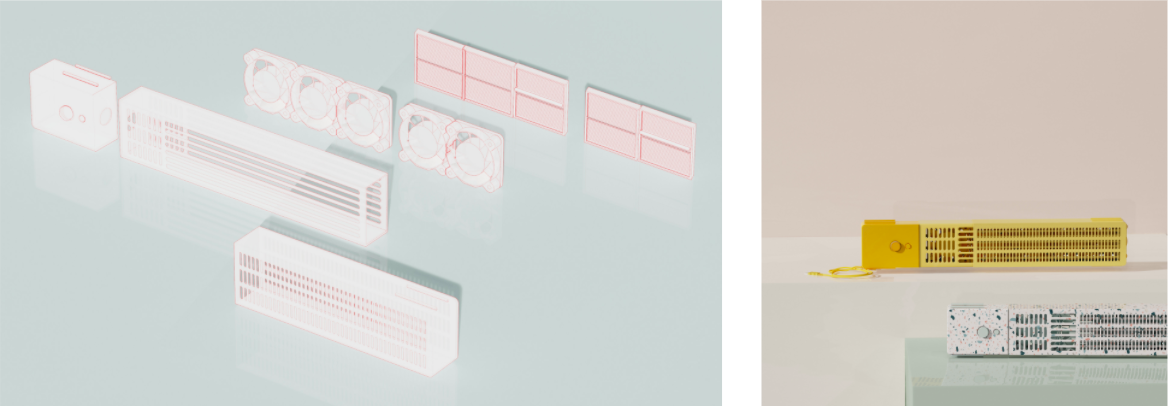Innovation starts with new challenges and fresh perspectives, a concept well known to both the Product Design program and Andersen Corporation. This notion formed the basis of their spring 2021 collaboration when graduating product design seniors worked directly with Andersen Windows and Doors products and professionals to develop solutions for “bringing the outdoors in” as part of their capstone projects.

“The idea for the brief arose from the trend of merging indoor and outdoor spaces as well as COVID-era concerns about getting enough fresh air inside buildings. For those people without an outdoor space to utilize, windows can be a means to allow the outdoors in,” explained Andersen’s Research Development & Innovation Product Design Manager, Ben Goebel.
But catching a breeze isn’t always as easy as just opening a window. Students were asked to consider one of four key concerns—security, allergies, accessibility, or noise—and were tasked with designing a fully functional window technology prototype that addresses the chosen concern for tenants living in apartments, assisted living, or dorm-type buildings. The student with the best all-around product would win a $1,000 prize.
“The design process begins with user and market research,” stated Assistant Professor Carlye Lauff. “Students had to look up materials, determine what products already exist, and interview their target audiences to narrow the scope of their projects and generate ideas.” After ideation, students presented five initial concepts, then three mockups to the Andersen team, using the client’s feedback to further refine their designs into one completely functional prototype and written final report.
Rachel Davel (Product Design ’21), the winner of the $1,000 prize, focused her project on improving air quality and long-term health for families living in dense urban environments. Her initial research revealed that people have been affixing air filters to box fans and propping them in their windows to provide air influx without pollution. Building off this idea, Davel designed a minimalist-profile, adjustable window fan with two-way filters to more effectively purify the air.
Reflecting on the process, Davel expressed the value of putting her product design skills to the test with a real client. “Learning how to step outside my comfort zone and get familiar with a topic I don't have experience in is very important, since most work as a product designer is prompted by clients,” she explained.
To Andersen’s Research Development & Innovation team, the “inexperience” Davel described translated to an opportunity for new perspectives. “These students are not window and door industry experts, and thus have a very different view of possibilities for our product and for our customers. Our Andersen team gets a lot of energy and new ideas from these collaborations, as well as a closer look at future interns or full-time hires,” said Gobel.
Not only did the partnership give students a real-world challenge, it offered them mentoring and guidance from experienced engineers and gave new graduates a foot in the door to the larger industry. All aspects of the students’ broader product design curriculum were called upon, blending function and form, materials and fabrication, presenting, and report writing. “Students had to turn their big ideas into physical products that work for a specific client and purpose,” said Lauff.
The industry connections and project experience also felt timely to students in another way. “By the end of the semester, we had all been dealing with the pandemic for over a year, giving us a very different relationship with our homes and personal space. Designing around increasing airflow and how that can positively influence an individual's health felt very relevant. It was a reminder that as designers we have a responsibility to use our skills to help others,” concluded Davel.
After two years of pursuing a degree in engineering, Ben Leibham (B.S. ’18, Product Design) knew that something was missing. In search of a field that would combine his interests in art, engineering, and business, Ben spoke with an industrial designer who encouraged him to pursue a degree in product design.
In May 2018, the College of Design’s Product Design Program graduated its inaugural class of undergraduate students.
If there is one thing students in Toy Product Design know, it’s how to play hard and work even harder. All semester long, they’ve been creating the next big thing in toy design and on May 3rd all of that hard work will pay off when they present their final products at PLAYsentations.






